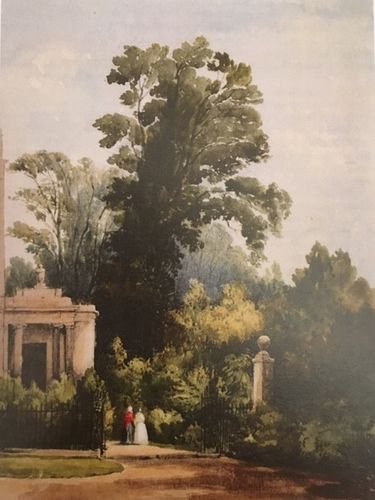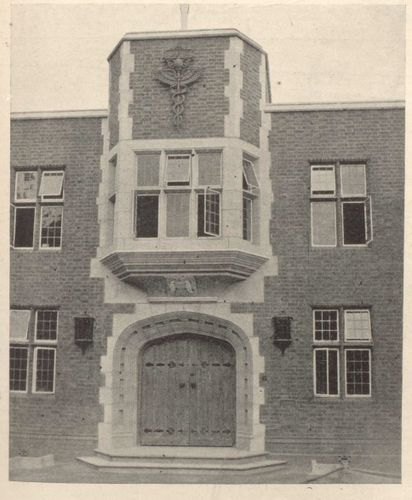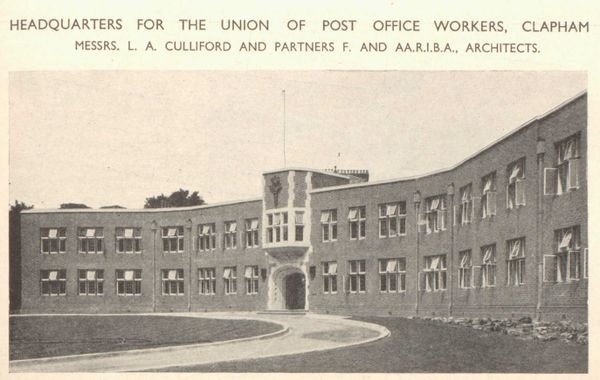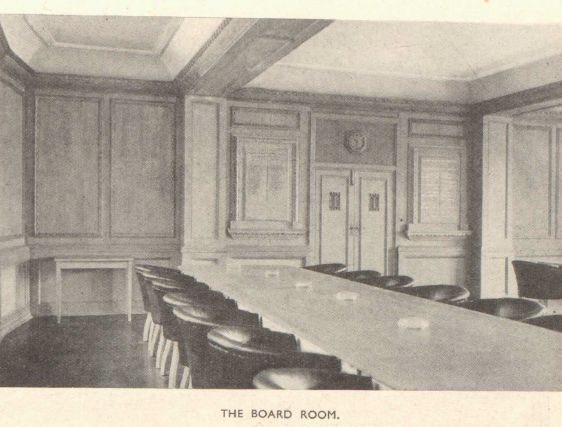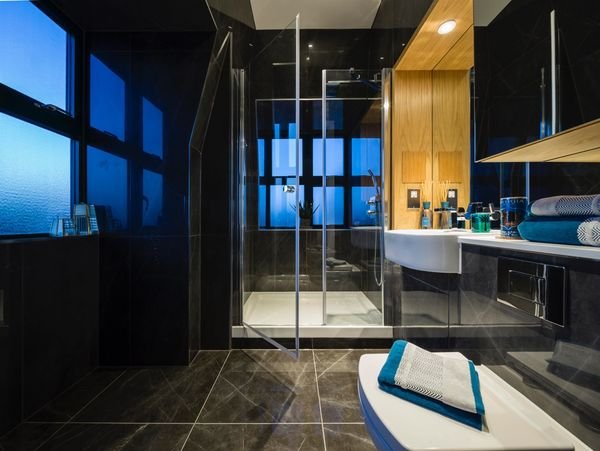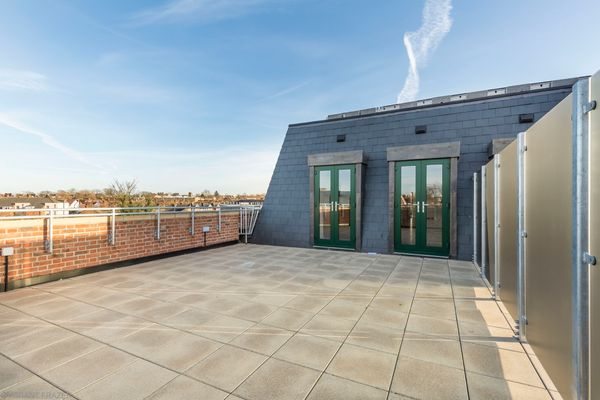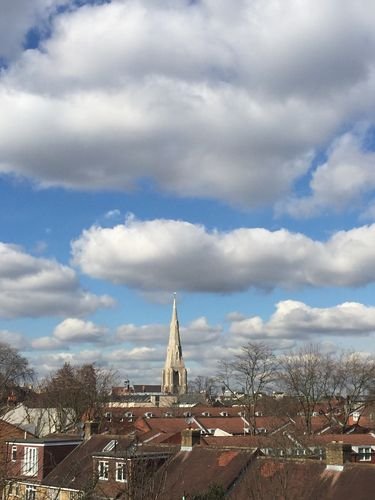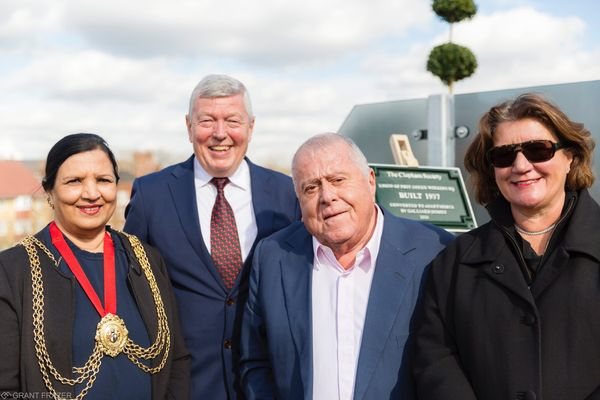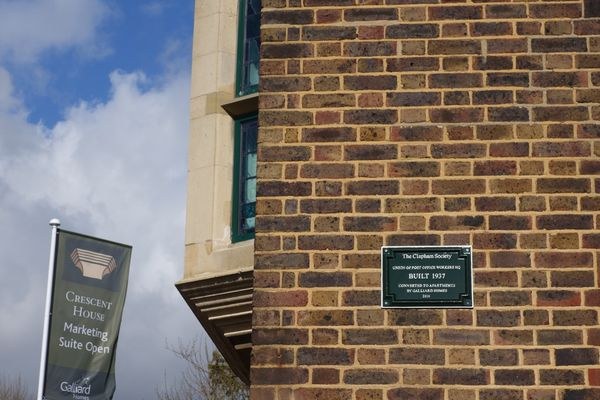The Clapham Society Green Plaques
9. Union of Post Office Workers Headquarters
Pictures relating to this history are at the foot of the page
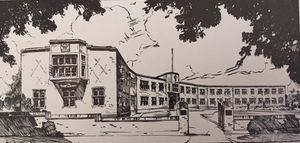
A large house, Grove Lodge, set in extensive grounds which reached as far as the present Abbeville Road, once occupied this site. Grove Lodge was part of Crescent Grove Private Estate built in 1825/6 by George Child as a family investment. George Child himself originally lived in this house, which was the grandest and the only detached house in the development which comprised a crescent shaped terrace on one side and semi-detached villas linked by coach houses on the other side.
In about 1920 the house was sold to the Amalgamated Union of Building Trade Workers for use as their headquarters, and renamed ‘The Builders’. The Crescent Grove Estate minutes record that in September 1921 the ‘Hon Treasurer & the Hon Secretary be requested to interview the Secretary of the Builders with a view to obtain his Cooperation & financial aid in the repairs of the road.’ The next month the Secretary ‘was requested to obtain an estimate for repairs to the front gate from The Builders Offices’.
In the early 1930s the Union of Post Office Workers had outgrown their headquarters in Cromwell Road, Kensington and looking for a new base, decided to purchase the former Builders HQ in Clapham – ‘where development is proceeding, but not yet at the stage where the cost of a freehold is excessive’ – which they would demolish to construct purpose built premises. The grounds of the original Grove Lodge were divided and in 1935 the Builders Union commissioned a new building from the architect, L A Culliford, with a frontage on Abbeville Road. The same architect designed the new headquarters for the Union of Post Office Workers roughly on the footprint of the original Grove Lodge. This building was opened on 16 July 1937. An article in The Builder in September 1937 gave a detailed description and several photographs. It pointed out that the building had been planned to take advantage of the pleasant surroundings with all working rooms facing south, and storage and filing rooms on the north side. The article continued…
‘The main features consist of a spacious entrance hall and staircase with a stained glass window embodying the arms of the Union on the central axis, which is approached by a circular drive. The canteen and kitchen are located in a convenient position for easy access to all users of the building and a recreation room is provided for the staff. On the first floor the main feature is the general secretary’s room panelled in walnut, which is at the head of the staircase and centrally placed for the entire building. The board room suite is quite self-contained and consists of a large room panelled in limed oak, a committee room panelled in Oregon pine, and an executive dining room. Another feature of the first floor is a reference library which is accessible for all departments.
The article goes on to describe the construction – reinforced concrete with brick external walls, steel-framed windows with leaded lights and moulded brick mullions, oak doors, and emphasis given to the main entrance by a stone doorway and quoining to the oriel bay window, with a large bronze emblem above. The grounds were laid out ‘in straightforward manner with an interesting rock garden, and two wrought iron gates to Crescent Lane embodying the initials of the Union’.
In 1976 an additional storey was added to the building to accommodate the increasing number of staff. In 1998 when the Union, by then renamed the Union of Communication Workers (UCW) merged and relocated, the building was sold to the Metropolitan Housing Trust (MHT) for office use.
In 1982-83 Henry Twining Court sheltered housing was built between the two union buildings, and so named because Henry Twining of the tea family once occupied the original house on the site, Grove Lodge.
In 2012 MHT moved and the building was converted for residential use by Galliard Homes in 2016-17 and renamed Metropolitan Crescent. To coincide with completion of the conversion and the launch of the apartments a Clapham Society Green Plaque, marking the former use of the building, was unveiled by Rt. Hon. Alan Johnson, MP, who had worked in the building for several years when he was General Secretary of the Union of Communication Workers. The ceremony was attended by the Mayor of Lambeth, Saleha Jaffer as well as many guests and Clapham Society members. As part of the celebration the choir of nearby St Mary’s School gave a brief performance, a time capsule was buried in the grounds of the building and Galliard Homes hosted a champagne and canapés reception.
Please wait for the gallery to load (17 pictures), it may take several seconds.


